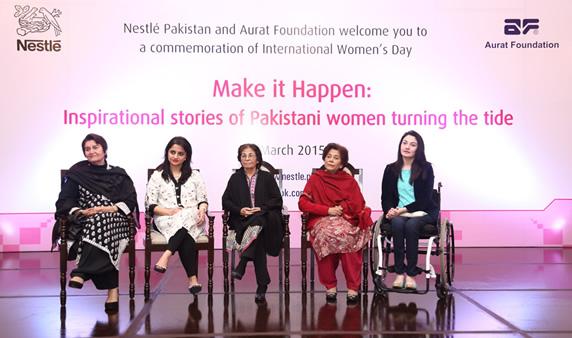Herding behavior in designing commercials refers to businesses’ tendency to imitate their competitors’ advertising strategies and techniques. This can include using similar themes, slogans, or even visual elements in their advertisements. Businesses believe that if their competitors are using a certain technique, it must be effective. However, this approach may not always lead to the most creative or effective advertising campaigns.
What Is Femvertising?
One rising trend in advertising is femvertising. Femvertising refers to the use of advertising to empower and positively portray women. Femvertising, or the use of feminist themes in advertising, can be a powerful tool for the Pakistani advertising industry. By using strong, empowered women in their advertisements, companies can appeal to a broader audience and promote a positive message of gender equality. There has been a rise in the integration of feminist notions and pro-women language in the advertising and marketing of brands.
From the “Main Perfect Hon” campaign by Gul Ahmed, empowering women to embrace their flaws to Pepsi‘s recent campaign “Why Not Meri Jaan” encouraging female bike riders; Pakistan brands are increasingly attempting to institutionalize the rising influence and the power of feminist narratives and women empowerment for their marketing communications.
How To Femvertise?
Before embarking on the bandwagon of femvertising, it is vital to understand its concept, issues, and challenges to avoid backlash from all stakeholders, be it consumers or society.
Femvertising, also known as feminist advertising, can be a powerful tool for the advertising industry in Pakistan for several reasons.
- First, femvertising can help to break down stereotypes and promote a more accurate representation of women in advertising. In Pakistan, women are often portrayed in traditional gender roles, such as homemakers and caretakers. Femvertising can challenge these stereotypes by depicting women as strong, independent, and capable individuals. This can help to shift societal attitudes towards women and promote gender equality.
- Second, femvertising can also help to appeal to a larger audience, including women and men. A study found that ads that promote gender equality are more likely to be viewed positively by both women and men. In Pakistan, where the population is predominantly Muslim, femvertising can also appeal to a religious audience by promoting the idea of equality and respect for women, which is consistent with the principles of Islam.
- Third, femvertising can help to build brand loyalty among women. Studies have shown that women are more likely to trust and buy from companies that support gender equality. In Pakistan, where women are becoming increasingly educated and financially independent, this can be a powerful way to attract and retain consumers.
- Finally, femvertising can also help to promote social change. In Pakistan, women face many challenges, including poverty, lack of education, and discrimination. Femvertising can raise awareness about these issues and encourage people to take action to support women’s rights.
Femvertising is not as prevalent in Pakistani commercials as it is in other countries. However, in recent years, there have been a few examples of Pakistani commercials that have incorporated feminist themes or messages. Femvertising has been used to promote a variety of products and services, such as beauty products, clothing, and household goods.

Some examples include commercials that feature women in leadership roles or breaking stereotypes and achieving success in traditionally male-dominated fields. While femvertising aims to break down stereotypes, it can also inadvertently reinforce them. For example, commercials that depict women only in traditional roles may perpetuate negative stereotypes about women.
Criticism
It is worth noting that some critics argue that the term “femvertising” itself can be problematic as it implies that advertising that does not target women is not pro-women. In addition, some critics argue that these advertisements are not truly feminist but instead designed to sell products rather than promote social change.
Femvertising may be perceived as inauthentic or insincere, especially if the company or brand does not have a history of promoting gender equality in other areas of their business. It may also be viewed as disrespectful of cultural norms and values, especially if the company or brand is not sensitive to the cultural context they are advertising.
Women comprise a significant portion of the Pakistani population and are a major consumer demographic. By using femvertising, companies can tap into the purchasing power of this demographic and attract more female consumers However, it is essential to note that while femvertising can have positive effects, it is not a solution by itself. Some companies have been criticized for using femvertising as a marketing tactic while failing to address sexism and discrimination within their own workplaces. Companies must be aware of these issues and strive to create an authentic and meaningful representation of women in their advertising and overall business practices.











































